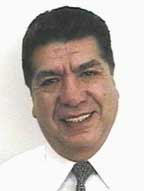Selected Works of Sergio Jiménez, MD, MACR
Transcriptional activation of the alpha 1(I) procollagen gene in systemic sclerosis dermal fibroblasts:. Role of intronic sequences.
Elena G. Hitraya, Thomas Jefferson University and Sergio A. Jimenez, Thomas Jefferson University
DATE: August 1996
SOURCE: Arthritis & Rheumatism, 39(8):1347-1354
RELATED URL: http://www3.interscience.wiley.com/journal/112212984/abstract
ABOUT THIS DOCUMENT:
This article is available only from the publisher's website.
ABSTRACT:
OBJECTIVE. To investigate the transcriptional regulation of the alpha 1(I) procollagen gene (COL1A1) in cultured dermal fibroblasts from patients with diffuse systemic sclerosis (SSc) of recent onset and to evaluate the role that intronic sequences may play in the upregulated expression of COL1A1 in SSc dermal fibroblasts.
METHODS. Dermal fibroblasts from 6 patients with diffuse SSc of recent onset and from 3 healthy individuals were studied. The steady-state levels of alpha 1(I) procollagen messenger RNA were evaluated by Northern hybridization analysis, and the transcriptional regulation of COL1A1 was examined by transient transfection experiments with deletion constructs containing portions of COL1A1 promoter (with 5' end points at -5.3 kb, -2.3 kb, and -804 bp and 3' end point at +42 bp) ligated to the chloramphenicol acetyltransferase (CAT) reporter gene. To examine the role of intronic sequences, constructs containing, in addition to the COL1A1 promoter, a portion of the first intron (+380 bp to +1,440 bp) cloned in front of the CAT gene were transfected. The efficiency of transfections was normalized relative to the net amount of CAT plasmid actually transfected into recipient cells, determined by a modified Southern hybridization procedure.
RESULTS. Maximal CAT activity was observed with constructs extending from -804 bp to +42 bp in both normal and SSc fibroblasts. However, the activity driven by this construct was 80-110% higher in SSc fibroblasts. The CAT activity driven by a construct with a 5' end point at -5.3 kb was only 15-20% higher in SSc cells, and the CAT activity driven by a construct with a 5' end point -2.3 kb was 35-45% higher in SSc fibroblasts. The CAT activity driven by the -804-bp promoter construct was increased up to 4-fold in SSc fibroblasts in comparison with normal cells when the intronic segment spanning +380 bp to +1,440 bp was included in the transfected construct.
CONCLUSION. The results directly demonstrate the transcriptional activation of COL1A1 in dermal fibroblasts from SSc patients. The data also indicate that first-intron sequences of COL1A1 are required for maximal transcriptional activity of the collagen gene and may play an important role in the up-regulation of its expression in SSc fibroblasts.

